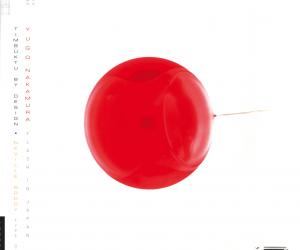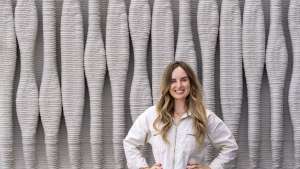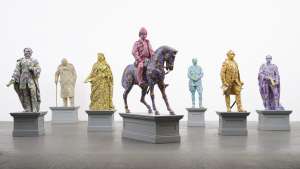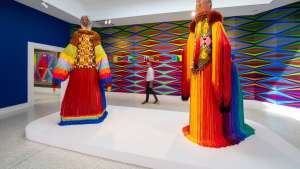First Published in

This is a defiance bred from growing up with the degradation that is racism and discrimination. Even after the approved social remedies have been seen to have been administered, this virus lurks cunningly in the background while deftly changing appearance to suit its masters.
A defiance that sits uncomfortably in an intolerant world not willing to accept difference as this would mean sharing, and God forbid that.
A defiance extracted from the indignity of being portrayed and treated like a sub-class human, just because of the location of my birth.
And, in this context, it is a defiance of watching our visions, images, wisdom and culture relegated to vignettes of a global subversion that has already dictated the plot and its embellishments.
Opportunities lost, opportunities at hand.
Consider the world watching art and wonder how many people really know where Cubism got its inspiration? Today this sells for millions. In galleries around the world I see people standing in awe of a sculpture by Henry Moore or Brancussi and sometimes all I have is a sense of Dé ja vu.
Great art? It's all around me… but who knows this and why don't they know this?
This is not indifference to world art on my part nor do I mean to compare, but as developing nations that have only recently shed the shackles of colonialism, we were left at the starting blocks as all the great art movements forged into the heyday of the industrial revolution and the art markets that this encouraged. Some not only cynically exploited our situation but plundered our artefacts, rendering them impotent and faceless thereby devaluing our contribution to the joy that is art.
Nevertheless, I have learnt to shed the bitterness of the past and move forward defiantly to at least try and redeem some of our heritage, identity and individualism and expound it through art and design.
Outside of our natural environment, being surrounded by majestic art and artefacts in all forms imbues the essence of our souls and character. Besides being inspirational, they have traditionally served as a means of expressing our cultural values. It's all there to be touched, absorbed, displayed and even owned which fills me with a sense of pride. A pride that helps me define a solid base to construct my visual interventions.
It's supposed to be a new age for us - the global village - where we can reveal ourselves and at last have the chance to assert our identity and forge our destiny. We have matured culturally and can now show the world our daring, innovative sense of art.
It's supposed to be a new age where the world can enter our cultural arena without the bigoted baggage associated with 'Africa' and embrace and celebrate our spiritual participation in humanity.
But this is just a theory. There remains the landscape that demotes us to mere spectators and not players in the visual body politic. To accept our art as equal is to accept us as equals - and therein, my friends, is the larger battle.
Where Franz Fanon, Amilcar Cabral, Patrice Lumumba, Steve Biko and Nelson Mandela made gains on the political front, where Chinua Achebe, Wole Sonyika, Ngugi wa Thiong'o and Dambudzo Marachera made gains on the literary front, we too can take on the mantle on the design front.
Staying true to the source and passionate to our vision is the spear that can pierce the bubble of complacency that surrounds us, so that we can be seen as equals and respected in our own right.
After all, it is every designer's duty to offer a new vitality, energy and greater appreciation of the diversity of the world, to the world, through creative defiance.
To illustrate the battleground we stand on, I have included this letter I wrote to a client who is a 'United Nations' agency concerning the poster shown... need I say more?
Dear ------- ,
Enclosed are the revised designs for the African Crafts Market poster. Let me get straight to the main point of this letter regarding the symbolism of the image of the poster.
You and your colleagues are concerned from a 'political point of view' that in your initial 'tests', Moslems see a cross in the image and Christians see Moslem iconography in the same design and these parties could be offended. You have indicated that I should dismantle the design to 'make it safe' and, to me, ultimately mediocre and ineffective.
I feel that I cannot make these adjustments to the concept without destroying it completely. I feel that the original is perfect and I would feel reluctant to change it as the balance and feel are just right.
More importantly though, has it occurred to you that Christians could see a cross and Moslems their iconography thereby pleasing everybody, who have to live together anyway?
Anybody can see anything in any design. That is the nature of things. It is when we want to use these points for political or other gain that problems arise.
This is a crafts market and for hundreds of years African crafts people have used "cross" like images in their designs without any implications or intended offence to anybody. In whatever form they take, they are part of a visual and graphic dictionary that belongs to us all. (The attached sheet shows just a few of the thousands of this type of design that can be found throughout the continent and I do not feel that these were intended to insult anybody).
At a time when you are supposed to be encouraging creativity and progress you seem to play to unfounded fears of how bigotry can subject any enterprise to suit their ends. These are of course based on western conceptions and assumptions of graphic language, which we are expected to accept as universal and the common denominator of communication.
As a designer, in my work I constantly struggle to encourage other artists to explore our past and revitalise aspects of it to enrich our people today. In other words, to look at the source for inspiration in a world that has become sterile of ideas, because it has adopted imitation and the compromising of its ideals as it yearns to be assimilated into the 'global' mainstream. If only a part of this Market is to educate and enlighten, then here is an opportunity to establish a belief in the artists and crafts people who will participate in this event.
Our collective icons and beauty cannot be allowed to be wiped out of our history and development or held hostage by an ignorant politic that only wants to embrace symbols of their power, in the meantime we stagnate into obscurity because we want to protect our jobs by appeasing their Philistine visions.
Every time you heed to these perversions you do irretrievable harm as you subconsciously breed a form of self-censorship, and are regarded with suspicion by African progressives who see a hidden agenda in your activities linked to the derailing of our progress and dignity.
Being affirmative and positive is really quite easy. All you need explain is that the design is of four stylised people representing the various fields of the Fair. Nothing more because that is what it is.
Once again, we see things as we want to e.g. Could your UNV logo be possibly depicting white males only, encompassed by olive leaves (Roman) of European supremacy? If so, does anybody intend to do anything about it as it offends women and black people? Double standards?
Food for thought and discussion.
Regards.
Chaz Maviyane-Davies is a Zimbabwean Design Consultant and Filmmaker.
Currently he runs a design / advertising studio in Harare called The Maviyane-Project. Films written, directed and produced by Chaz include the award winning 'After the Wax' - A personal view of Nationality and Identity.' His work has been screened at various international Film Festivals and his design work has featured in numerous exhibitions.
The Website: www.maviyane.co.zw The Graphic Commentaries: www.article7.org






